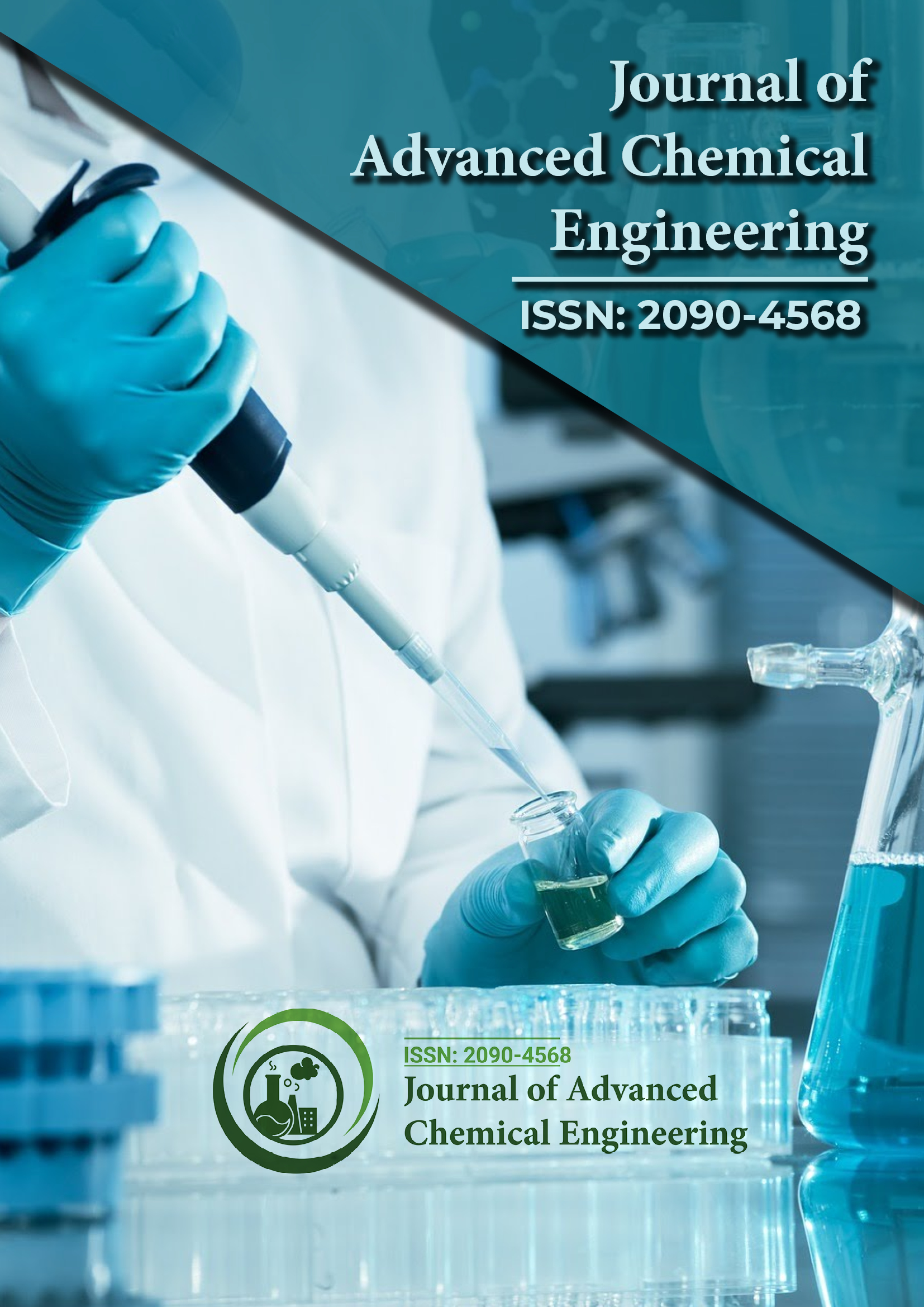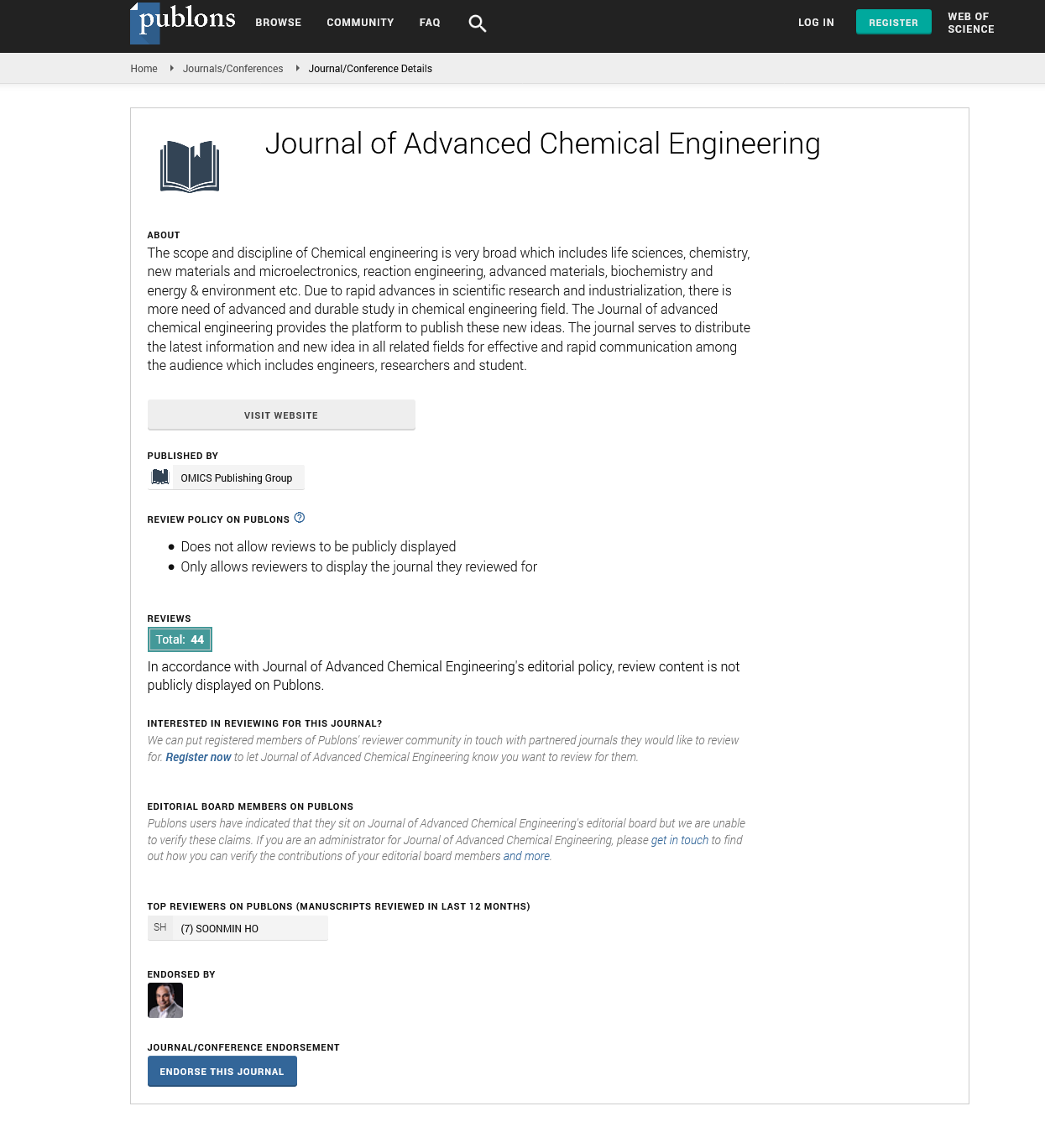Indexed In
- Open J Gate
- Genamics JournalSeek
- Smithers Rapra
- RefSeek
- Directory of Research Journal Indexing (DRJI)
- Hamdard University
- EBSCO A-Z
- OCLC- WorldCat
- Scholarsteer
- Publons
- Geneva Foundation for Medical Education and Research
- Google Scholar
Useful Links
Share This Page
Journal Flyer

Open Access Journals
- Agri and Aquaculture
- Biochemistry
- Bioinformatics & Systems Biology
- Business & Management
- Chemistry
- Clinical Sciences
- Engineering
- Food & Nutrition
- General Science
- Genetics & Molecular Biology
- Immunology & Microbiology
- Medical Sciences
- Neuroscience & Psychology
- Nursing & Health Care
- Pharmaceutical Sciences
Perspective - (2024) Volume 14, Issue 2
Therapeutic Applications of Gelatin-Based Delivery Systems in Chemical Advances
Luiz Amores*Received: 20-May-2024, Manuscript No. ACE-24-26622; Editor assigned: 22-May-2024, Pre QC No. ACE-24-26622 (PQ); Reviewed: 05-Jun-2024, QC No. ACE-24-26622; Revised: 12-Jun-2024, Manuscript No. ACE-24-26622 (R); Published: 19-Jun-2024, DOI: 10.35248/2090-4568.24.14.336
Description
Gelatin, a natural polymer derived from collagen, has become a prominent material in the development of drug delivery systems due to its biocompatibility, biodegradability, and versatile chemical properties. This article explores the chemical and structural engineering aspects of gelatin-based delivery systems, focusing on their applications in therapeutic contexts. The discussion encompasses the synthesis, modification, and optimization of gelatin-based carriers, highlighting recent advancements and future directions in the field.
Gelatin as a delivery system material
Gelatin is a protein obtained by the partial hydrolysis of collagen, which is found in connective tissues of animals. Its unique properties make it suitable for various pharmaceutical applications, including drug delivery. The material's solubility in water, ability to form gels, and capacity to encapsulate active substances make it an attractive option for developing delivery systems.
Chemical properties: Gelatin is characterized by its amino acid composition, which includes glycine, proline, and hydr- oxyproline. These amino acids contribute to the polymer’s ability to form stable gels and interact with other molecules. The chemical structure of gelatin allows for various modifications, such as crosslinking and grafting, to enhance its functionality as a drug carrier.
Structural properties: Gelatin forms thermoreversible gels, meaning that it can transition between gel and sol states depending on temperature. This property is advantageous for drug delivery systems as it allows for controlled release and easy processing. The gelation behavior of gelatin can be adjusted by altering its concentration, pH, and temperature, making it versatile for different applications.
Chemical engineering of gelatin-based delivery systems
The chemical engineering of gelatin-based delivery systems involves modifying the gelatin polymer to optimize its performance as a drug carrier. Various strategies are employed to enhance the material's properties and functionality.
Crosslinking: Crosslinking agents, such as glutaraldehyde or genipin, are used to form covalent bonds between gelatin molecules. This process improves the mechanical strength and stability of gelatin gels. Crosslinked gelatin networks can better withstand physiological conditions and control drug release rates. Researchers are exploring various crosslinking methods to tailor the properties of gelatin-based systems for specific therapeutic applications.
Chemical modification: Gelatin can be chemically modified through grafting or functionalization to introduce new functional groups. For instance, introducing hydrophobic or hydrophilic groups can enhance drug encapsulation efficiency and release profiles. Chemical modifications can also improve the interaction of gelatin-based systems with biological tissues, enhancing their therapeutic efficacy.
Composite materials: Combining gelatin with other materials, such as nanoparticles, polymers, or inorganic compounds, creates composite systems with improved properties. For example, gelatin nanoparticles can be used to deliver drugs with high precision, while gelatin composites with inorganic materials can enhance stability and control release rates.
Structural engineering of gelatin-based delivery systems
Structural engineering focuses on designing and fabricating gelatin-based delivery systems with precise control over their morphology and mechanical properties. Various approaches are used to achieve the desired structural characteristics.
Micro- and nanostructures: Fabricating gelatin-based delivery systems with micro- or nanostructures enhances their performance and specificity. Techniques such as electrospinning, microfluidics, and 3D printing are used to create structures with controlled sizes and shapes. Micro- and nanostructured gelatin systems can improve drug loading capacities and release profiles, as well as enable targeted delivery.
Hydrogel formation: Gelatin hydrogels are formed by crosslinking gelatin molecules in an aqueous environment. The structure and properties of hydrogels can be controlled by varying the concentration of gelatin, crosslinking agents, and reaction conditions. Hydrogels can be designed to mimic natural extracellular matrices, providing a suitable environment for drug delivery and tissue engineering applications.
Encapsulation techniques: Various encapsulation techniques are employed to incorporate drugs into gelatin matrices. Techniques such as coacervation, solvent evaporation, and electrostatic assembly are used to achieve high drug loading and controlled release. The choice of encapsulation method depends on the properties of the drug and the intended application.
Therapeutic applications of gelatin-based delivery systems
Gelatin-based delivery systems have been applied to various therapeutic areas, demonstrating their versatility and effectiveness in drug delivery.
Oral drug delivery: Gelatin capsules and tablets are commonly used for oral drug delivery due to their ability to encapsulate drugs and control release. Gelatin-based systems can be engineered to dissolve at specific pH levels, ensuring targeted release in the gastrointestinal tract. This approach is beneficial for drugs requiring controlled release or protection from the acidic environment of the stomach.
Injectable systems: Injectable gelatin-based systems, such as hydrogels and nanoparticles, are used for delivering drugs directly into the bloodstream or tissues. These systems can be designed to form gels upon injection, providing localized drug delivery and reducing systemic side effects. Injectable systems are particularly useful for administering biologics and other sensitive drugs.
Topical and transdermal delivery: Gelatin-based gels and films are used for topical and transdermal drug delivery. These systems can adhere to the skin and release drugs over extended periods. Gelatin’s biocompatibility and ability to form stable films make it suitable for delivering drugs through the skin for conditions such as wounds, burns, and dermatological disorders.
Citation: Amores L (2024) Therapeutic Applications of Gelatin-Based Delivery Systems in Chemical Advances. Adv Chem Eng. 14.336.
Copyright: © 2024 Amores L. This is an open-access article distributed under the terms of the Creative Commons Attribution License, which permits unrestricted use, distribution, and reproduction in any medium, provided the original author and source are credited.

